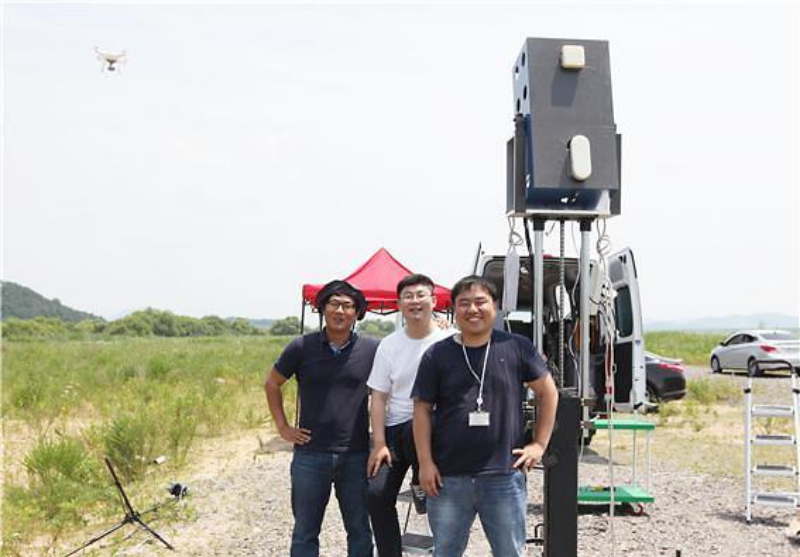South Korean researchers have developed a detection system capable of identifying small drones more than three kilometers away that can be used to monitor and stop spy drones or unmanned operations targeting high-risk facilities such as nuclear power plants.
The Collaborative Robots Research Center at Daegu Gyeongbuk Institute of Science and Technology (DGIST) teamed up with a team led by Youngwook Kim of California State University, Fresno, to develop the new system, the Ministry of Science and ICT said in a statement on Tuesday.
DGIST’s system is superior enough to match technology developed by RADA, an Israeli company specializing in defense electronics, as it can detect small drones such as Phantom produced by China’s DJI more than three kilometers away, the ministry said, adding commercialization would be possible at the end of 2019 or early 2020.
DGIST researchers led by Oh Dae-gun have successfully detected a drone, which is 55 centimeters wide and 40 centimeters high from a test spot more than three kilometers away, the ministry said.
“We will make further efforts to improve the status of domestic radar technology by changing the landscape of the market,”
Oh was quoted as saying. His team vowed to develop a better system than’s Israel’s within a year that could be applied to airports and key facilities around the world.
The ministry said the new system would greatly contribute to the development of related industries and the reinforcement of defense capabilities.
The South’s defense ministry purchased detecting equipment from foreign companies after several North Korean spy drones crashed south of the border in 2014. North Korean drones were nowhere near as sophisticated as they were used mainly for short-range missions to take pictures, but concerns grew that they could be weaponized for future attacks.
Last year, South Korea’s military formed a drone unit that can carry out various missions from reconnaissance and suicidal exposition to bombing. However, drone-detecting systems were from abroad.
The science ministry said the algorithm for tracking and identifying drones was developed jointly with a team led by Kim. Oh’s team has applied AESA (active electrically scanned array) radar technology to improve the maximum detection distance and ultra-high-resolution radar signal processing technology to accurately locate drones.
AESA radar modules have individual semiconductor amplifiers and phase displacement systems to control the transmission and reception of radio waves individually.
Radar cognitive technology based on artificial intelligence generally increases the recognition rate as more data is learned, but it’s not easy to secure large-scale data for learning. Researchers will enhance the system’s identification performance with radar recognition technology based on generative adversarial networks (GNAs), a deep-learning AI algorithm that can create similar data by learning on its own even if the amount of data is small.
Photo: Oh Dae-gun (RIGHT), a DGIST researcher, posing with other researchers at an unmanned aerial vehicle testing field – DGIST
Source: Aju Business Daily

